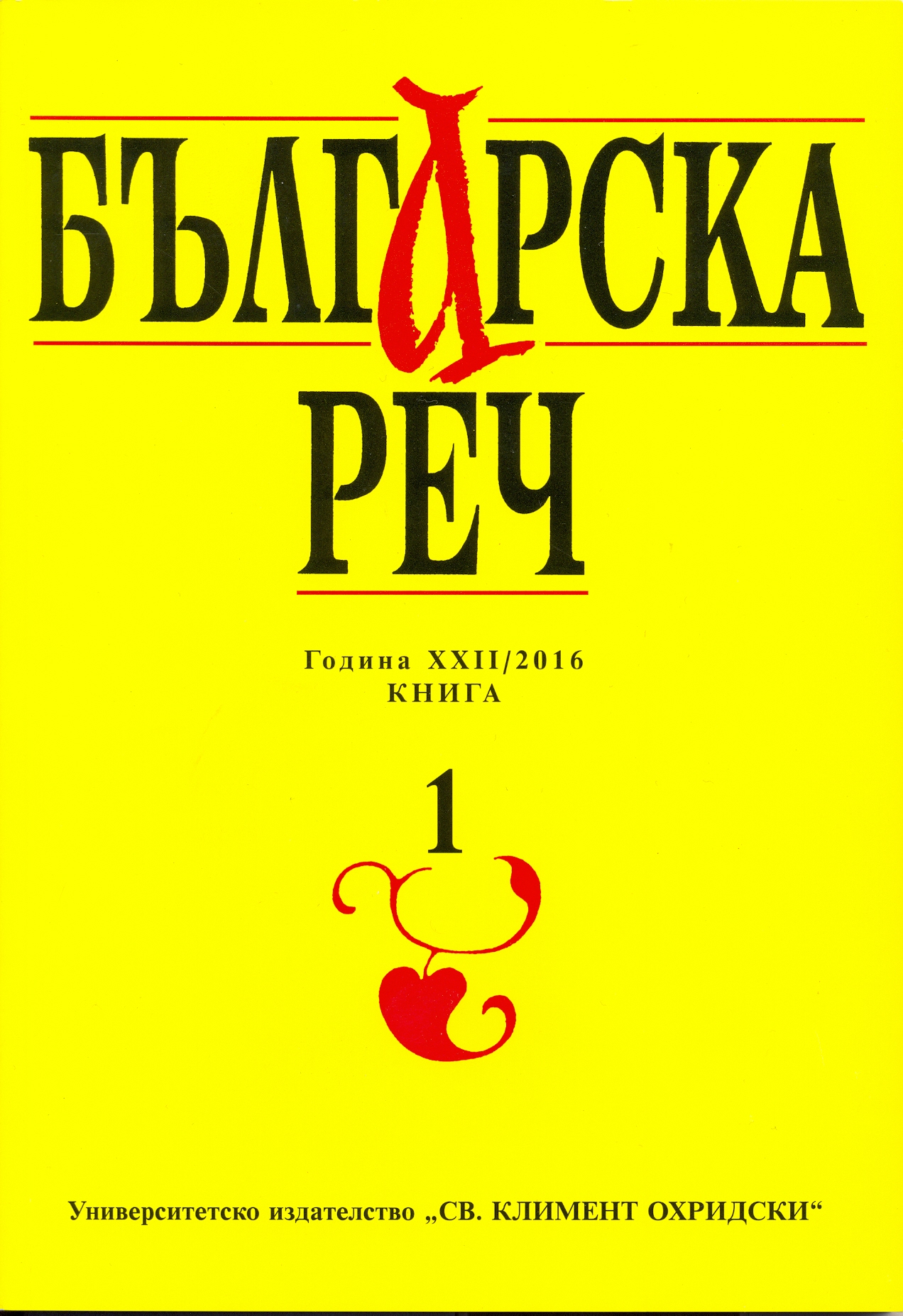
We kindly inform you that, as long as the subject affiliation of our 300.000+ articles is in progress, you might get unsufficient or no results on your third level or second level search. In this case, please broaden your search criteria.


The article aims at analyzing the fourfold use of words with root оусм- as a denomination for the tanned leather and the relevant craft, exercised by the hagiographic hero. They occur in two different parts original and translated of the manuscript № 1521 from 1564, located in the Church Historical and Archive Institute in Sofia. The manuscript itself contains the unique copy of the Nikola of Sofia’s Life by Matthew the Grammarian, which testifies the spread and the spiritual fundaments of the Sofia new martyrdom during the 16th century. The profile of the new martyrs in the name of Christ chares some common features, among which their professions, or crafts – an undoubted sign of realistic description and historical plausibility. The forms оусмошьвьчьство, оусмошьвьчьскъ, оусмотворьць, оусмы шити enrich the lexicographic interpretation of the motivating word оусма, оусъмиѥ, оусмъ, and allows the analysis to be carried out in the light of the biblical and the cultural tradition.
More...
The article is dedicated on the anthropomorphism of the mind in the Bulgarian proverbs. It is shown the cognitive metaphors of the mind as a man. The concept mind is compare with the concept heart. It is also presented the anthropomorphic features of the mind and of the heart. The article proves that the mind doesn’t possess emotionalmarks as the heart doesn’t possess mental. The study suggests the idea that the mind and the heart are two valuable components from the internal human life. They have their private life but the freedom of the mind is bigger than the freedom of the heart. On the other hand the heart is symbol of the human.
More...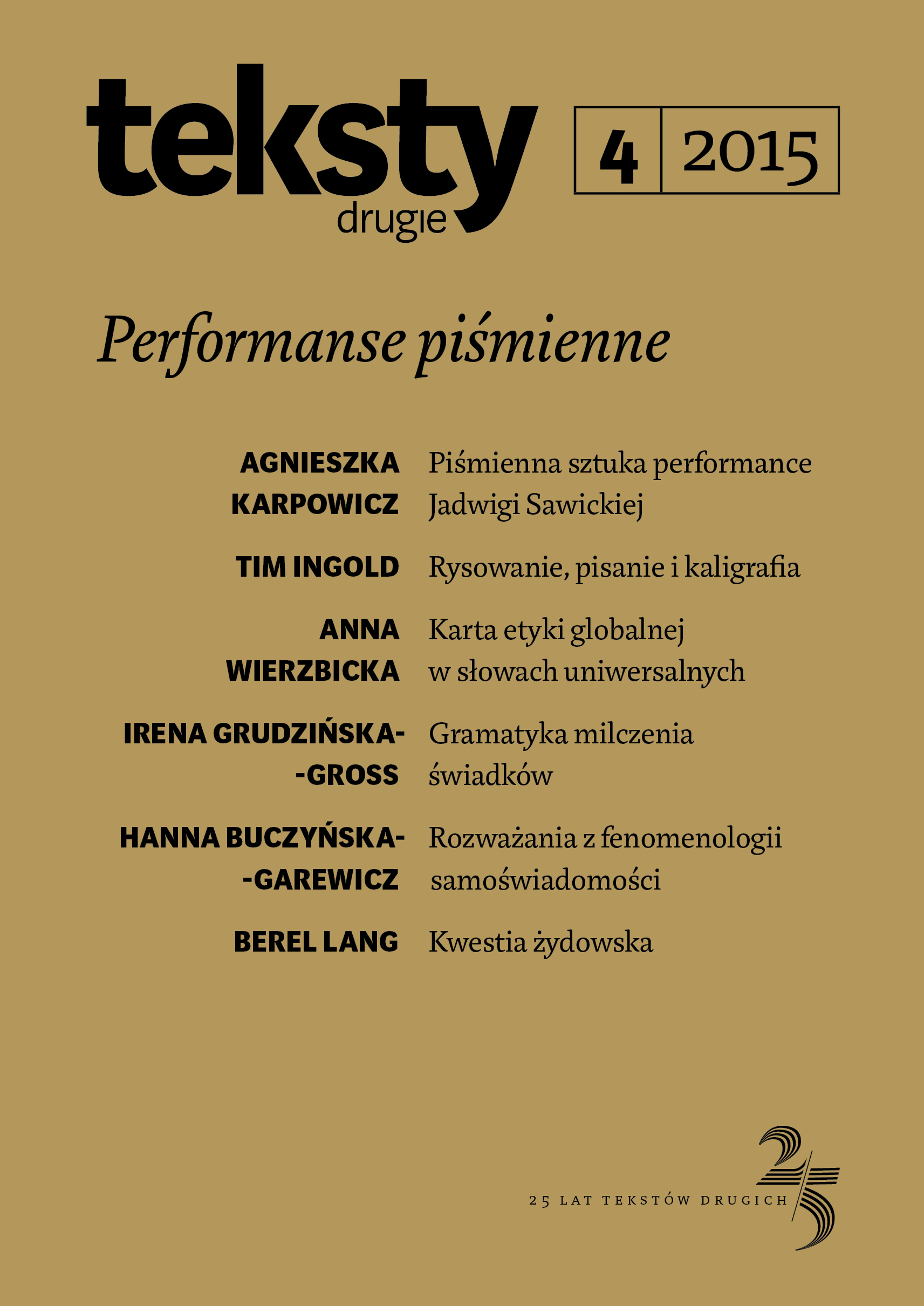
This article presents nineteenth-century literacy as a cultural phenomenon related to other practices such as drawing, notation, mathematical representation, etc. Litwinowicz-Droździel’s analysis is based on contemporary accounts – descriptions of writing lessons, methodologies and handbooks of the time, literary manuscripts, as well as texts whose interpretation we can broaden precisely by placing them in the context of graphemic practices.
More...
The “Declaration Toward a Global Ethic” adopted by the Parliament of the World’s Religions in 1993 and the “Earth Charter” (UNESCO, 2000) both hinge on the notion that in the era of increasing globalization the world needs a “charter of global ethics”. Wierzbicka develops this idea, engaging with the Dalai Lama’s suggestion that the “charter of global ethics” should be translated into all the languages of the world. Wierzbicka argues that this goal can be achieved if the norms of global ethics are formulated in a Minimal Language based on the universal “alphabet of human thought,” which emerges from several years of empirical study on many of the world’s languages. She presents two version of her “charter of global ethics” – a Polish version and an English one – suggesting they could act as a platform for global dialogue on ethical norms for all of humanity.
More...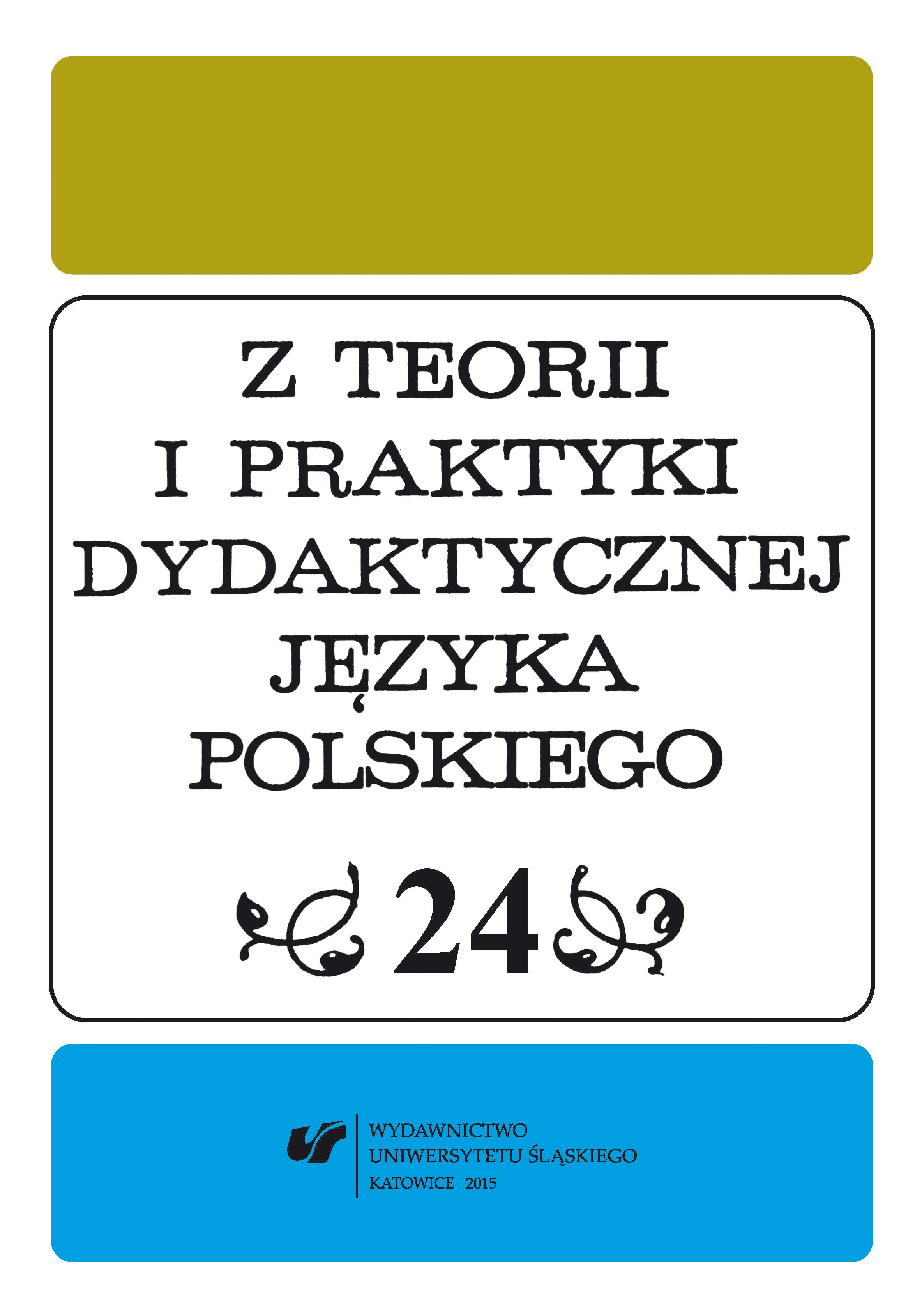
This article attempts to reflect on the place of the Holocaust in school discourse in the Polish language course that constitutes part of three stages of education. While discussing — on the basis of particular texts — the evolution of one of the fundamental topoi of the Holocaust, namely a diary or journal, the authoress presents such ways of interpretation that will support the contemplation of the Shoah at school. However, the article does not offer any specific methodical solutions; it rather constitutes an invitation to a deeper reflection over the well-known literary texts, when enriched with new contexts.
More...
In her article, the authoress proposes that — because of changes in both the contemporary society and the family model — contemporary children’s literature should be de-stereotyped. She refers to the Swedish and Norwegian experience: literary texts for children (available in Polish translation) by F. Nilsson and M. Nilsson Thore, R. Lagercrant, E. Eriksson, in which the authors address the problem of fear of “otherness”, describe students from the perspective of a child and life from the perspective of the so-called misfits. Schools should not — according to the authoress — resign from the books that depict models of, e.g. gender, in a way that is different than the ones desired in the contemporary society. Moreover, the image of a mother should also be de-stereotyped, as in Dorota Masłowska’s book titled “Jak zostałam wiedźmą. Opowieść autobiograficzna dla dorosłych i dzieci” („How I became a witch. An Autobiographical Tale for Adults and Children”). Children’s literature is to teach young readers how to accept themselves and others, and to educate the young generation how to be open to “Otherness.”
More...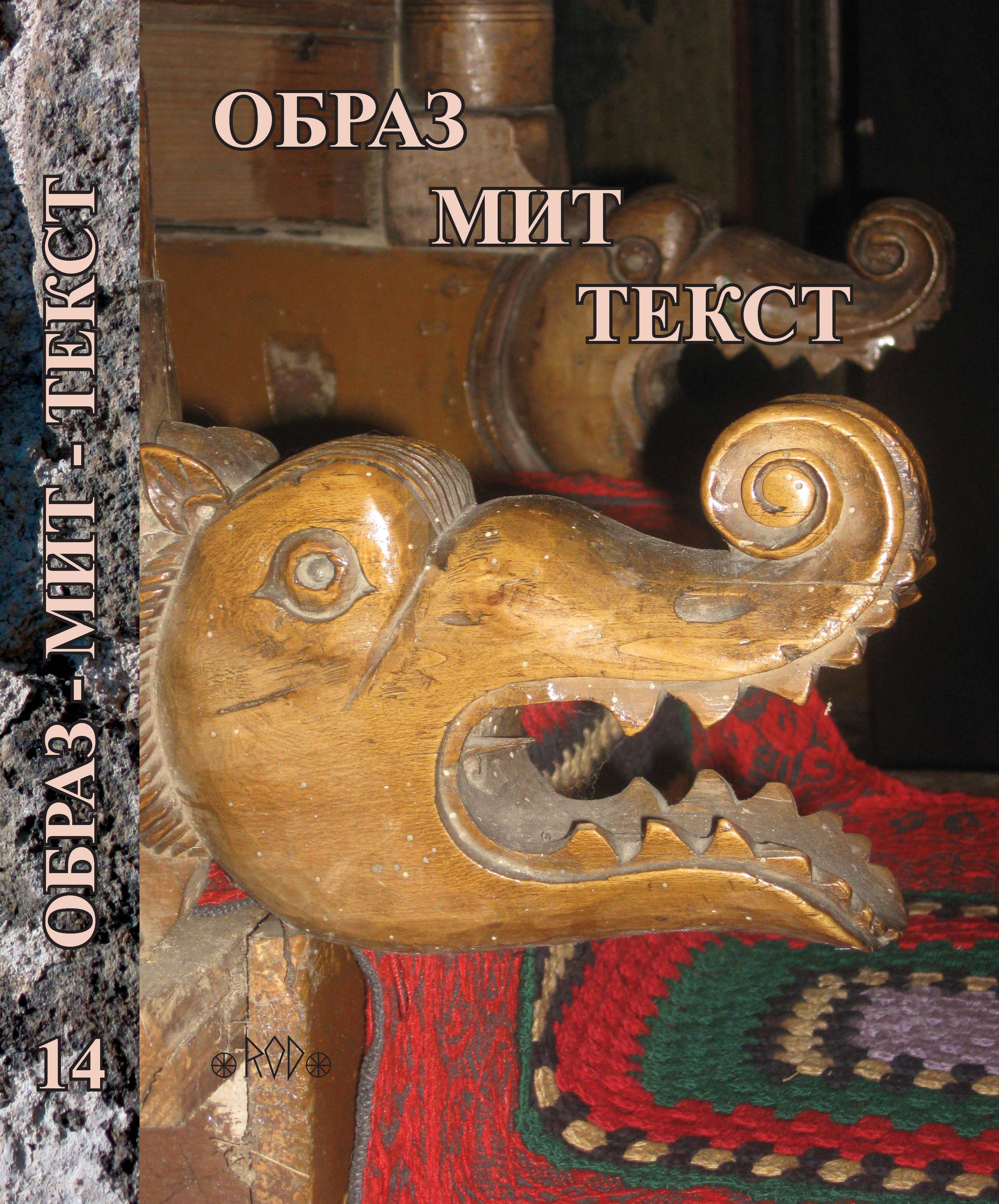
The paper proposes a linguistic and cultural analysis of the saying “Become the devil’s pall until you pass the bridge” – a proverb preserved in several versions – and of some idioms with similar semantics, e.g. devil in the pools, water devil and the like. The imagery in these proverbs derives from pre-Christian Slavic demonological ideas, according to which the devil is associated with the water element and the areas related to it – pools, fords, bridges. In addition, some parallels are drown to folklore, namely to tales and legends, as well as to some place names.
More...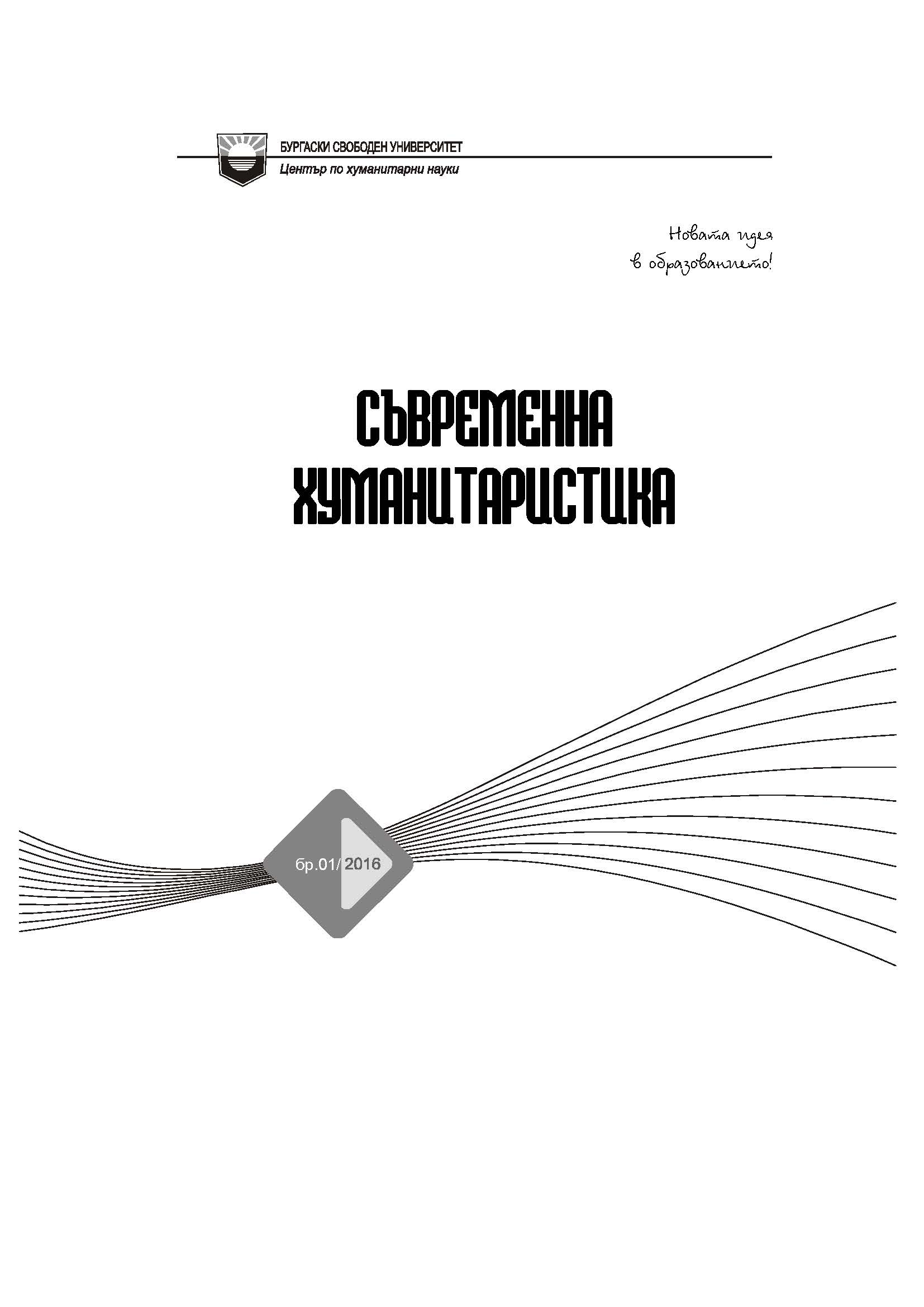
The basic moments of teaching in stylistics of future journalists and PR specialists from the Center of the Humanities are discussed in the article. Attention is paid to the linguistic peculiarities of the journalistic style texts. The meaning of the linguistic analysis in the teaching of the students is revealed.
More...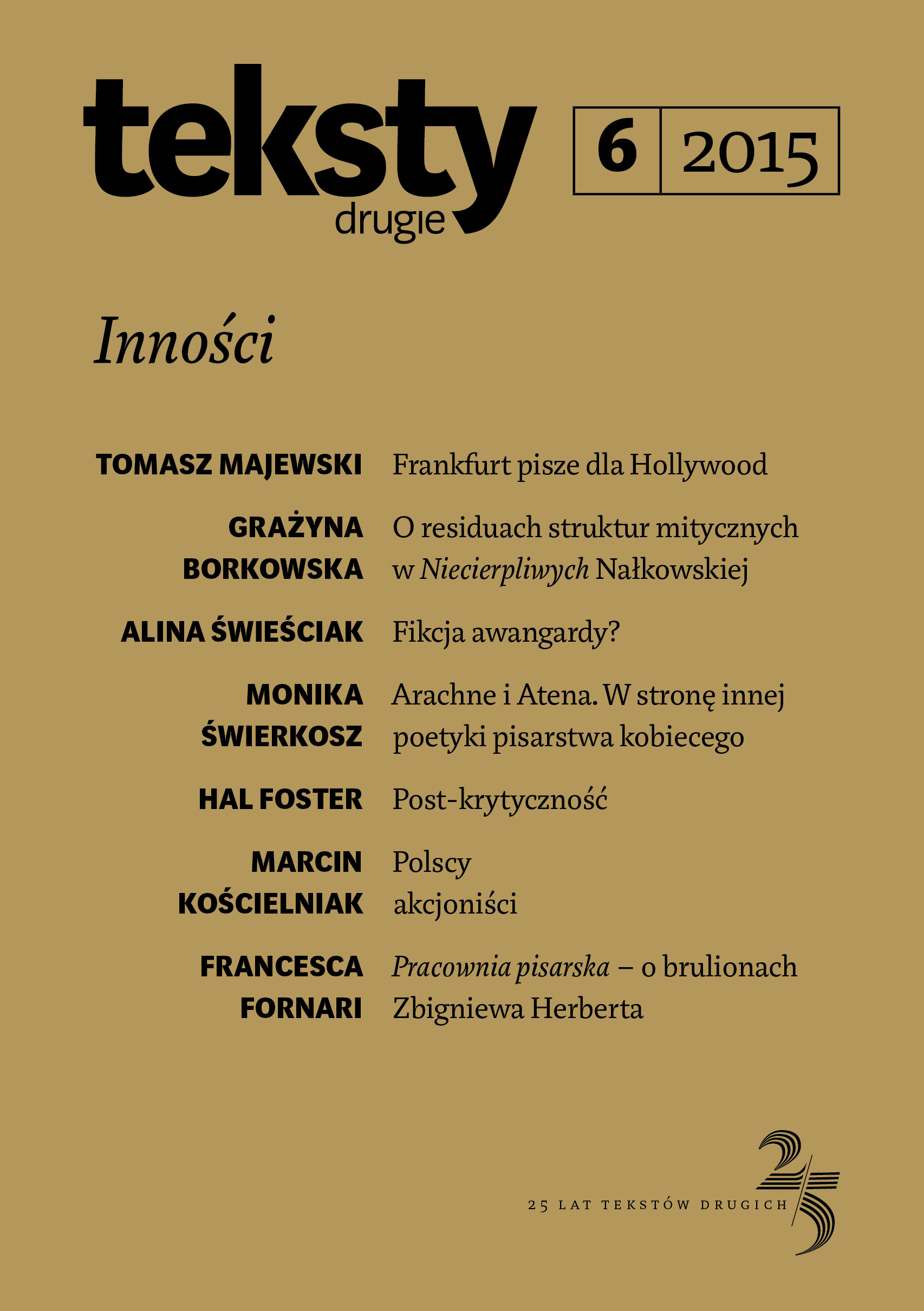
This article polemicizes with Arkadiusz Żychliński’s book Laboratoria antropofikcji: Dociekania filologiczne [Laboratories of Anthropofiction: Philological Investigations], but Musiał also departs from Żychliński’s key concepts. First, he reconstructs the book’s main points, especially Żychliński’s claim that a person’s natural way of interacting with themselves, others and the world is so-called fabulation (i.e. creating a story), which is why homo sapiens as a species was able to surpass the role of being an object in the evolutionary experiment and instead became a conscious subject in it. Żychliński also makes an innovative contribution to traditional philology in that he brings it into conversation with analytical philosophy and the philosophy of language (Donald Davidson), philosophy of mind (Daniel C. Dennett), developmental and evolutionary psychology (Michael Tomasello), and ethology. In the second part of the article Musiał polemicizes with Żychliński’s main points, pointing out – with reference to contemporary cognitivistic theory and the theory of the ‘embodied mind’ – the non-communicative nature of his concept of philology (in broader terms: the notion of fiction).
More...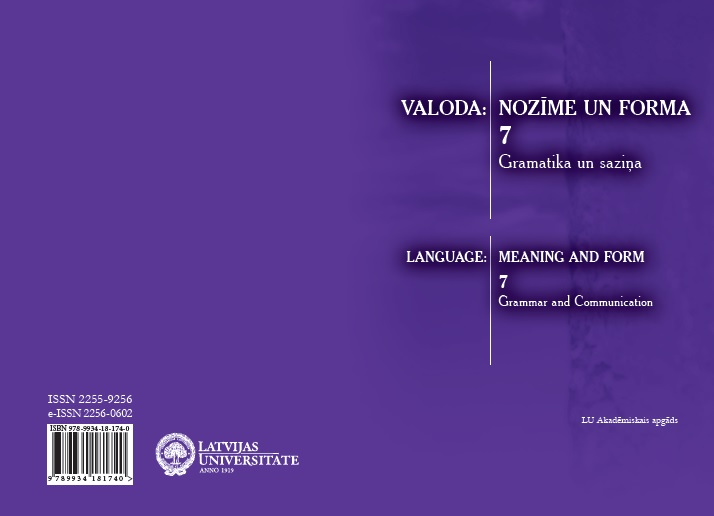
The paper discusses semantic and morphosyntactic features of secondary predication in Lithuanian and Latvian. The types of secondary predication, viz. depictives, resultatives and adverbials, are distinguished according to the semantics: adverbials are event-oriented, while depictives and resultatives are participant-oriented (the former denote an event which is simply simultaneous with the main event, while the latter denote an event which is related to the main event via causal relation). However, a rigid delimitation of the three types is impossible as there is a number of constructions which oscillate between them both semantically and morphosyntactically. It is proposed that the zone between depictives, resultatives and adverbials is occupied by transitional, or borderline, types of secondary predication. The borderline types analysed in the paper include posture constructions, “grow up” constructions and “slice” constructions. In order to visualize the relationships between the main and the borderline types the principles of the semantic map method are applied and an extended preliminary semantic map of secondary predication is proposed.
More...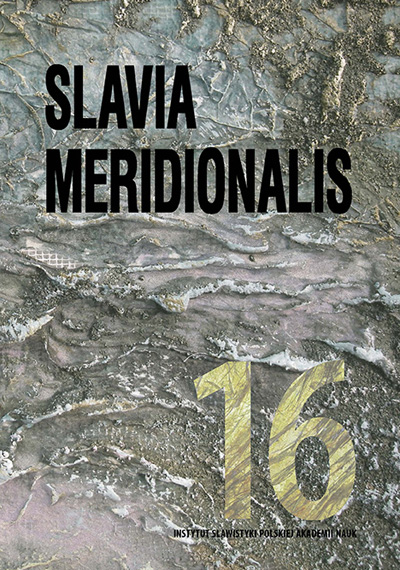
The article examines two difficult to interpret verses from the Book of Psalms. The analysis compares the Hebrew text, the Septuagint, the Old Bulgarian text (along with its Church Slavonic version) and the Modern Bulgarian synodical translation of the psalms. The proposed reading is based on linguistic, literary and theological observations. In the first analysed verse (Ps. 4:2), semantic illegibility is interpreted as a result of the implicit presence of a specific Hebraism in the translations. In the other case (Ps. 5:9), verbal expression is highly elliptical because of the preference given to the phonetic structure of the verse in the Hebrew original.
More...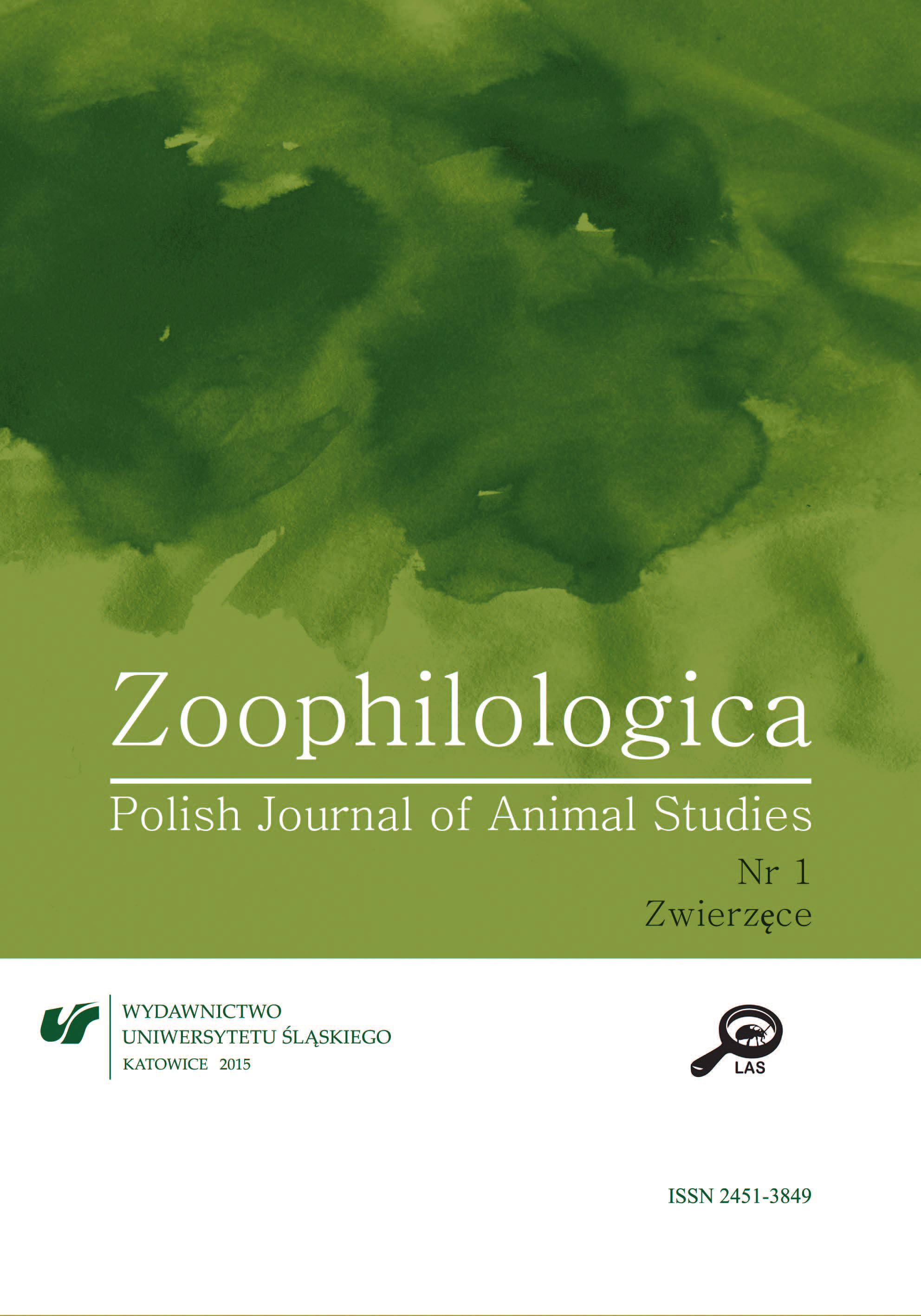
In the article it is argued that the conviction that verbally expressed language (as commonly employed by humans) is necessary for thinking is not justified. Animals have been found to employ various communication systems (languages) and, though these are different from human language, they testify to consciousness and thought. Recent research among autistic people has indicated that they frequently think in images rather than words, and it is suggested that this was the original feature of human thinking and may also be the basis of animal thinking.
More...
The article deals with the analysis of Polish and Russian definitions of the owad / насекомое (“insect”) lexemes. On the basis of these definitions, the author tries to answer the question whether, from the linguistic point of view, insects are perceived as animals or not. It appears that in the majority of the Polish dictionary sources, the insect is not classified as an animal, while the Russian dictionary sources seem to be more consistent in classifying the insect as an animal. According to the author, this may be the result of the fact that the Polish dictionaries reflect linguistic notions of insects and, according to these notions, insects are not animals. On the other hand, the Russian dictionaries rely on scientific premises. These premises assume that an insect is an animal.
More...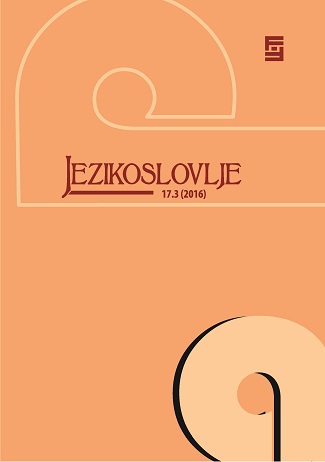
Review of: Gordin, Michael D. 2015. Scientific Babel: How science was done before and after global English
More...
The author treats the “literary artistry” of the work written in the earliest period of Old East Slavic literature. At a linguistic level, the author analyzes certain lexical phenomena and points out that the lexical units used in the monument is not fully presented in the dictionaries of Old East Slavic. From a stylistic standpoint, particular attention is devoted to diverse figures of repetition and, in a broader perspective, to biblical rhetoric. Linguistic and stylistic phenomena are considered using different copies. The author also emphasizes the need for a simultaneous examination of both the language and style of the work and the philological aspects of its entire manuscript tradition.
More...
The paper considers the perception of derived words related to Russian expressive wordformation by foreign students. Analysis of literary translation is used as a research tool. The author defines special methods of rendering a word-formation meaning of derived adjectives and nouns in a typologically close language as well as determines the semantization strategy for the derivatives of this type in a foreign audience.
More...
Using the material of Russian or Common Slavic names, the article studies the characteristics that became the basis for naming animals. The basic ways of nomination of animals and birds (by similarity, feature, action, etc.) are defined. Bird names as a specific group of zoonyms are analyzed separately. Particular attention is paid to taboo words and synonymy within certain names of animals.
More...
The article examines the distinction between a reasonable criticism and an insult (humiliation) in the situation of unequal social status of communication participants. Insult is considered to be an instrument of verbal aggression, used for social pressure, constraint and communicative sadism. The paper justifies the conclusion that a linguistic expert ought to take into account the conditions of a speech act, particularly the status of an insulter and an insultee and the general context of communication, when analyzing the speech act of insult.
More...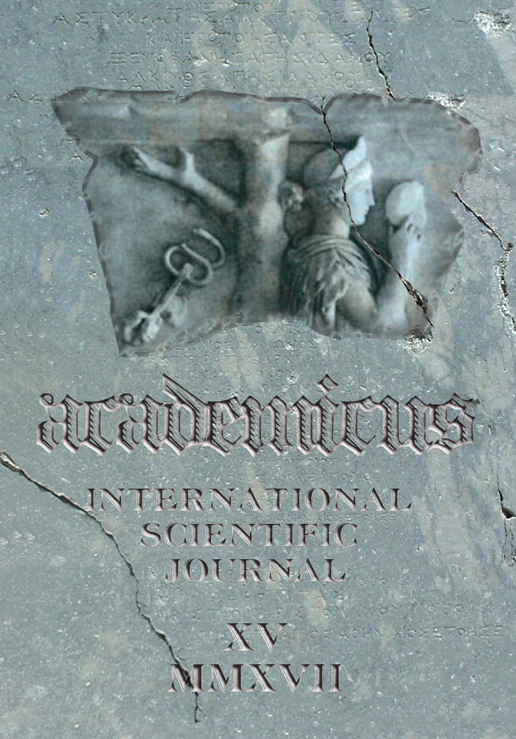
This paper examined the phenomenon of hate speech and foul language on social media platforms in Nigeria, and assessed their moral and legal consequences in the society and to journalism practice. It used both quantitative and qualitative methodology to investigate the phenomenon. In the first place, the paper employed the survey research methodology to sample 384 respondents using questionnaire and focus group discussion as instruments for data collection. Findings from the research indicate that promoting hate speech and foul language on social media have moral and legal consequences in the society and to journalism practice. Findings also show that although, the respondents understand that hate speech and foul language attract legal consequences, they do not know what obligations are created by law against perpetrators of hate speech and foul language in Nigeria. The paper therefore, adopted the qualitative, doctrinal and analytical methodology to discuss the legal consequences and obligations created against perpetrators of hate speech and foul language in Nigeria. The paper concluded based on the findings that hate speech and foul language is prevalent on social media platforms in Nigeria and that there are adequate legal provisions to curb the phenomenon in Nigeria. It recommends among others things that the Nigerian government and NGOs should sponsor monitoring projects like the UMATI in Kenya to better understand the use of hate speech and that monitoring agencies set up under the legal regime should adopt mechanisms to identify and remove hate speech content on social media platforms in Nigeria.
More...